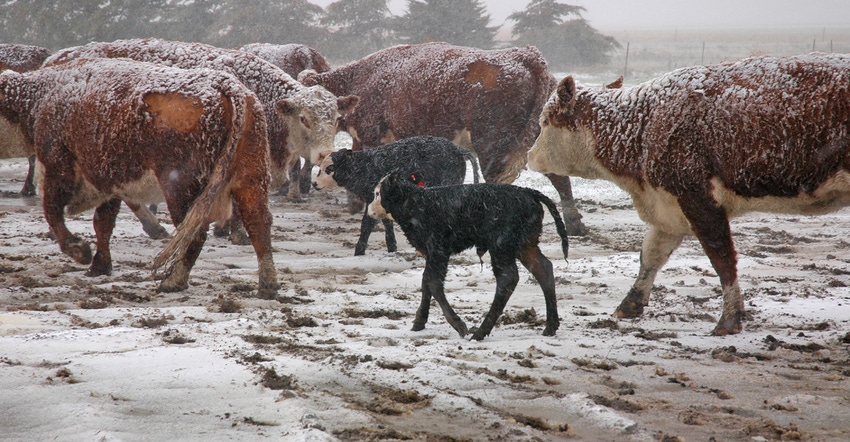October 31, 2019

There are a couple ways to reduce discounts on calves that lost ears or tails, or suffered damage to their ears and tails due to frostbite after being born, according to Bryon Parman, North Dakota State University Extension agricultural finance specialist.
1. Have a veterinarian examine the animals. A certification from a veterinarian that no further damage was done beyond the frozen ears and tails can assure potential buyers that there are no future health issues with those animals that would result in stunted growth or severe illness.
2. Hold back animals missing ears or tails until they reach a weight of 800 pounds. This would ensure that any cold weather lung or foot damage issues would appear by the time they reach market weight. However, weigh the cost of keeping an animal for an extended period of time to ensure that it is healthy versus the discount that may occur for cold-damaged animals, Parman suggests. When holding back additional animals, it may be costly if there is a shortage of forage or hay.
“While frozen ears and tails are not necessarily a problem in and of themselves, they do indicate a calf was born under cold conditions,” says Karl Hoppe, NDSU Extension livestock systems specialist at the Carrington Research Extension Center. “Whether frozen ears are a result of the cow repeatedly licking the calf’s ears and making them wet during freezing temperatures or a calf being born during a windy, below freezing day, both can result in short ears.”
Short tails could result from freezing temperatures or from being stepped on by a cow. Both are indications that the calf might be, but not necessarily, at a health risk, says Hoppe.
Short ears may reduce the option to implant calves since the ear may not be long enough to be implanted according to labeled directions. Feedlot gain and final weights will be reduced when not using implants.
“Discounts for calves with short, frozen ears or tails, and other less-desirable market factors are always greatest during the heavy fall calf marketing season,” says Tim Petry, NDSU Extension livestock marketing specialist. In the past, discounts of $30 or more per cwt have occurred.
Discounts can vary from year to year and from sale barn to sale barn. At times, calf sellers are surprised at how severe the discounts are when they receive their sale proceeds. Be sure to contact sale barns for advice prior to marketing calves that may be discounted, Parman suggests.
Source: NDSU, which is solely responsible for the information provided and is wholly owned by the source. Informa Business Media and all its subsidiaries are not responsible for any of the content contained in this information asset.
You May Also Like




